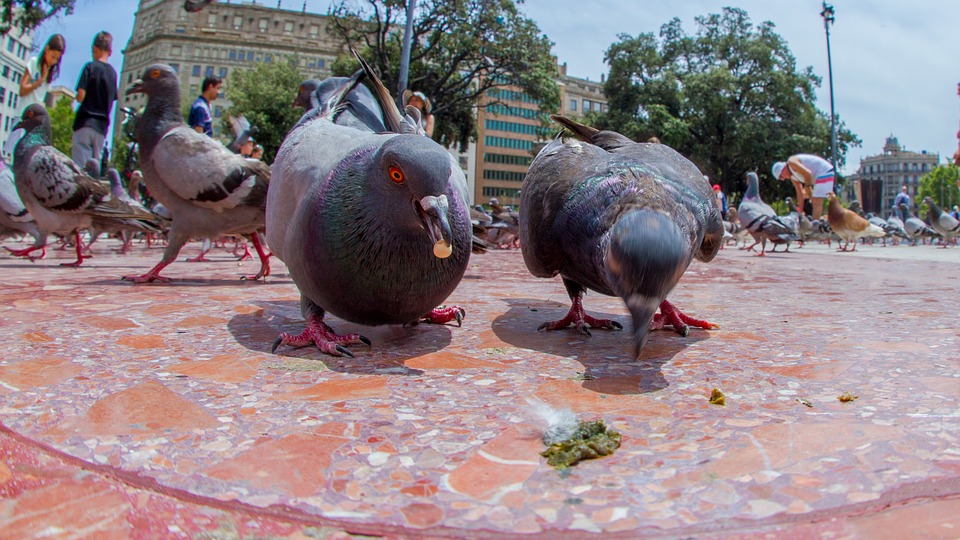
Birds are beautiful creatures that everyone would like to have around them. But soon you’ll know that some of the flying creatures will inflict damage to precious monuments. Very few people have random, unpleasant thoughts when they see magnificent birds flying around or perching on top of heritage buildings. People will get chills if they witness rodents crawling through a building or a severe infestation from insects. Besides, those birds can cause horrific damage which leads to huge expenses in repairs.
These graceful creatures play a vital role in our ecosystem by promoting plant reproduction as they are one of the seed dispersers. At the same time suddenly these contributors become agents of destruction to heritage sites the moment they enter cities. Unfortunately, many people are not aware of the fact that bird dropping can also cause significant damage. Birds like pigeons, starlings, sparrows, crows and gulls may have a huge effect on the lifespan of heritage sites. They make a nest and roost both outside and inside the buildings.
Heritage buildings represent the history and culture of a nation. It provides a sense of identity and continuity in a fast-changing world for future generations, thus it is essential to conserve irreplaceable sources of life and inspiration!
Let’s have a look at some reported news for bird nuisance.
The loft of pigeons a threat to the heritage structure
Deccan Herald | June 23, 2020
People, claiming to be generous, offer food – grains, cereals, and even glucose-rich biscuits- in front of Kote Anjaneya Swamy temple, up to Chamaraja Circle, where a statue of the late Maharaja Chamaraja Wadiyar X is housed in an ornate canopy.
The presence of hundreds of pigeons, their feeding and flying in hordes offer a great sight. But, those who enjoy the sight seem to ignore the harm to both, the heritage structure and also the birds.
Longer stays by blue rock pigeons at a particular place causes irreversible damage due to their droppings, which contain a compound called saltpeter or potassium nitrate. It is a threat to the marble statue of Chamaraja Wadiyar X. Besides, the life-size statue of the late Maharaja, the artwork, canopy, cusped arches of the fort wall and other heritage structures are under threat due to the droppings.
Pigeons mar Moazzam Jahi restoration
Express News Service | August 22, 2019
Pigeons are turning out to be the latest deterrent for the restoration project of the iconic Moazzam Jahi Market. Sources said that pigeon-droppings have caused minor damages to some of the restored portions of the market.
“Pigeons are becoming a major nuisance. Feeding the birds in the vicinity is a major concern,” an official said. Some of these issues were discussed during an inspection by MAUD principal secretary Arvind Kumar, and GHMC Central Zone Commissioner Musharraf Faruqui, here on Wednesday. The damage that bird-droppings can cause to historic buildings is extensive. Apart from soiling aesthetics, the droppings contain acids that can damage the building surfaces. Studies have shown that the ill-effects could continue long after the droppings have been removed. During the inspection, it was also decided that the structure which was constructed in 1935, would have “cool, decentralized heritage lighting”. The flooring pattern of the roof was also decided to be of hard granite, officials said.
Forget about how gross the bird feces look but it can cause severe damage to heritage structures. Birds don’t urinate so they flush out nitrogenous waste in form of droppings only. Their droppings contain uric acid which is capable to harm any construction material such as iron, stone, brick, or wood. It will faint the color, even cause serious corrosion to metal roofing. Bird nests harbor parasites. Also, under bird roosting area is an ideal place to breed flies and other insects that may cause a health risk to humans such as skin irritation, disease, or allergic reactions.
Many people use anti-roosting spikes which will keep away those pesky birds but the fact is the spacing between these spikes allow smaller birds such as starlings, gulls, and sparrows. The commercial gel repellents can irritate human eyes and can glue the eyes on contact.
So how can you preserve those heritage sites from those pesky birds?
We at C Tech Corporation provide a solution to keep those creatures away from roosting.
C Tech Corporation became the world’s first organization to receive approval for our biocidal product families under the EU-BPR (European Union Biocide Product Regulation).
CombirepelTM is engineered using a unique set of complex compounds that works on a repellency mechanism. It is extremely low-toxic, extremely low-hazardous, and eco-friendly and keeps birds away without killing them thus; maintains the balance of our ecosystem.
CombirepelTM Bird Repellent Gel Lacquer is a topical application that is compatible with most surfaces such as wood, ceramic, polymer, cement, etc. It causes irritation to the pain receptors associated with taste and reduces the feeding rate of birds.
Also, this coat can be pH adjusted depending on the structure so it gets additional protection from acid rain.
The Bye-Bye Birdie Spray can be easily sprayed on windows, roofs, beams, and trusses, outdoor AC units, etc. to prevent roosting.
CombirepelTM is RoHS, RoHS2, RoHS3, EU-BPR, REACH, NEA, APVMA compliant, and FIFRA exempted.
For more details contact us at
technical.marketing@ctechcorporation.com
Also, visit our websites:
1] http://www.ctechcorporation.com/
Follow our Facebook pages at:
1] https://www.facebook.com/Combirepel-411710912249274/
2] https://www.facebook.com/Termirepel-104225413091251/
3] https://www.facebook.com/Rodrepel-120734974768048/
Follow us on our Twitter pages at:
1] https://twitter.com/rodrepel
